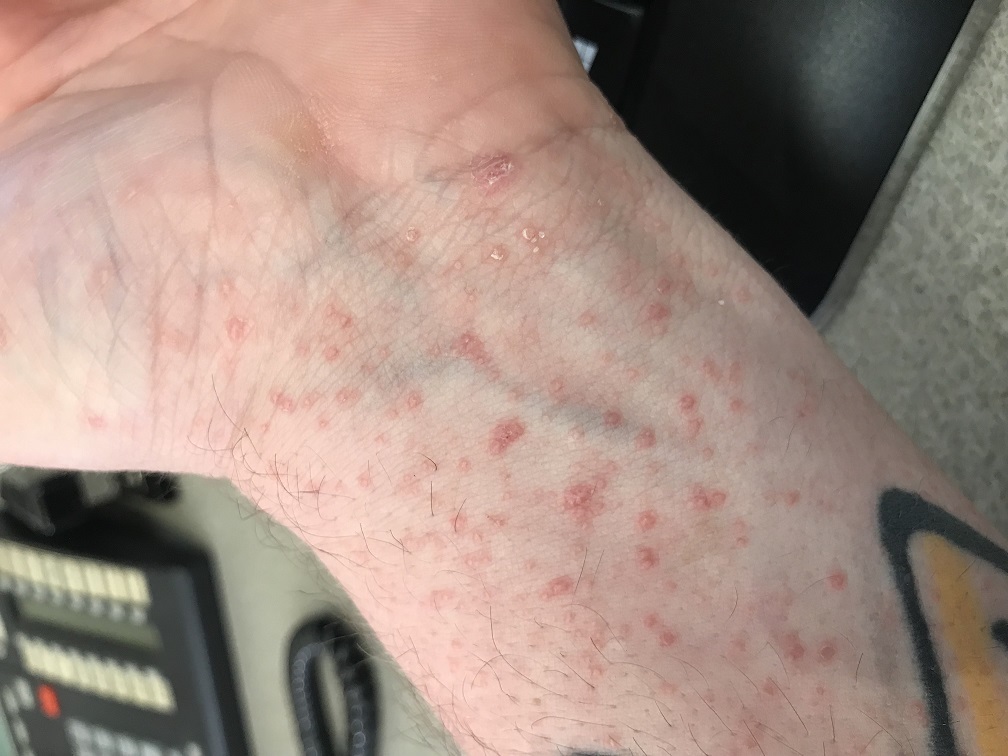
Hand, foot, and mouth disease. , these are called microorganisms and together they make up your skin microbiome.

Dyshidrotic eczema or dyshidrotic dermatitis.
What is this rash on my hands and feet. 7 rows common causes of rashes on the hands and feet. Not everyone experiences all of the symptoms of hfmd. The first symptoms of hfmd are usually a fever, reduced appetite, sore throat, and a general feeling of being unwell.
It can sometimes be dry, scaly or itchy. Hand, foot, and mouth disease. Rashes affecting the palms of the hands, soles of the feet, ears, or face.
Your skin is actually covered in trillions of bugs. A fever is often the first symptom of hand, foot, and mouth disease, appearing three to six days after contact with the virus. The condition is an itchy rash characteristically found on the palms, fingers and the feet.
Hand, foot, and mouth disease is typically mild. , these are called microorganisms and together they make up your skin microbiome. In this condition, both dead and new skin cells start building up in the outermost layer of your skin.
8 causes of palm rash. Exposure to heavy metals, such as lead, thallium, and mercury, may contribute to nerve damage that leads to hand and foot pain. The rash typically favors the face and distal extremities, particularly the dorsal hands and forearms.
The rash fully develops within 72. Sores in the mouth appear a day or two later, followed by a rash on the hands and feet a day or two after that. Scaly patches to appear on the palms of the hands and soles of the feet.
A small rash on the hands that gradually gets bigger; It generally occurs in children and is caused by a coxsackievirus. In our case, the id reaction followed 1 week after the initial onset, as is typical, and with the typical rash on the hands and feet as well as a widespread eczematous rash.
Hand, foot, and mouth disease is a contagious infection caused by several viruses, including the coxsackie virus. Cracked skin can also be a symptom of an. There are a number of conditions that may cause you to develop a rash on your palm.
Dyshidrotic eczema or dyshidrotic dermatitis. Here are some signs that your rash needs to be looked at by a medical professional: In one to two days, a rash on the soles of the feet and palms of the hands may develop, as well as painful sores inside the mouth.
This causes scaly patches on the top layer of your skin. Skin that peels, flakes, or is scaly; Persistent itchiness in the hands and feet may be a sign of crohn's disease, chronic kidney disease or liver failure.
Hand, foot, and mouth disease. Otc pain medications also help. Anyone can get hand, foot, and mouth disease, although it most commonly occurs in babies and children.
Muscle weakness, falls, heat intolerance, and low blood pressure. Sometimes cracked skin occurs due to a skin condition, such as eczema or psoriasis, or because the skin came into contact with an irritating substance. You may develop a rash on your skin on most parts of the body, including the back, neck, feet and hands.
This condition is diagnosed with nerve function. It is often caused by underlying conditions such as heart disease or diabetes. Scarring and inflammation of the liver associated with fatty liver disease can make the body itch, beginning with the palms and soles.
Other skin changes, such as drying, scaling, scarring, hardening, and darkening. The cause is unknown, and the condition often comes and goes, with episodes occurring mostly in warm weather. Many viral infections can attack nerve cells and cause neuropathy pain in the hands and feet.
Peripheral neuropathy causes pain in the extremities such as hands, feet, fingers, and toes. Some common causes of rashes on hands and feet include: Cellulitis is a bacterial infection that develops in the deep layers of the skin and on the lower legs and feet.
One of these skin conditions is eruptive xanthomatosis, which can make hands and feet itch. If you have a fever or pain accompanying the rash. When bacteria or fungi travel down your body hairs, they can infect the tiny pockets, called follicles, at the roots.
This may make treatment plans more difficult if the treatment fails. It usually appears as red spots or reddening. Some of the most common include:
Topical steroids increase the rate of treatment failure and often change the appearance of the rash. Excessive alcohol use also may lead to peripheral neuropathy. Hand, foot, and mouth disease is a viral infection that can cause red lesions on the mouth and a rash on the hands and feet.